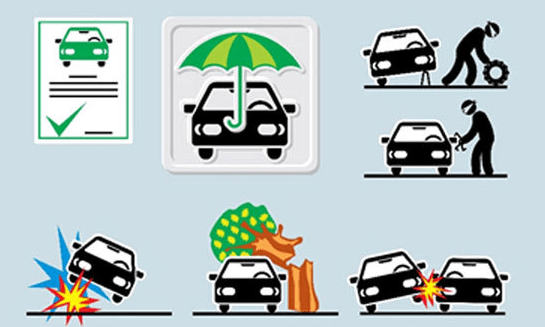Car insurance is an essential aspect of modern life, providing financial protection against a variety of risks associated with owning and driving a vehicle. As the number of vehicles on the road continues to increase, so does the potential for accidents, theft, and other incidents. Car insurance serves as a safety net, helping individuals manage the financial burden that can arise from these unexpected events. This article aims to provide a comprehensive understanding of car insurance, covering its definition, types, benefits, and various aspects that every vehicle owner should be aware of.
What is Car Insurance?
Car insurance is a contract between a vehicle owner and an insurance company, where the owner pays a premium in exchange for coverage against financial losses resulting from accidents, theft, or other damages to the vehicle. The insurance company agrees to cover the costs associated with these incidents, subject to the terms and conditions of the policy. Car insurance not only provides financial protection but also ensures compliance with legal requirements, as most jurisdictions mandate that vehicle owners carry at least a minimum level of insurance coverage.
The Importance of Car Insurance
The significance of car insurance cannot be overstated. Here are several reasons why car insurance is crucial:
- Legal Requirement: In many countries, having car insurance is a legal requirement. Driving without insurance can result in severe penalties, including fines, license suspension, or even imprisonment.
- Financial Protection: Car accidents can lead to significant financial losses, including repair costs, medical expenses, and legal fees. Car insurance provides financial protection by covering these costs, ensuring that you are not left financially devastated after an accident.
- Liability Coverage: If you are at fault in an accident, you could be held liable for the damages and injuries caused to others. Liability coverage, a key component of car insurance, helps cover these costs, protecting your assets and financial stability.
- Peace of Mind: Knowing that you are financially protected in the event of an accident or other unforeseen events can provide peace of mind. Car insurance allows you to drive with confidence, knowing that you are covered in case something goes wrong.

Types of Car Insurance
Car insurance policies come in various forms, each offering different levels of coverage. Understanding the types of car insurance available can help you choose the policy that best suits your needs. Here are the most common types of car insurance:
- Liability InsuranceLiability insurance is the most basic form of car insurance and is typically required by law in most jurisdictions. It covers the cost of damages or injuries that you cause to others in an accident where you are at fault. Liability insurance is usually divided into two components:
- Bodily Injury Liability (BIL): Covers medical expenses, lost wages, and other related costs for the injured parties in an accident caused by you.
- Property Damage Liability (PDL): Covers the cost of repairing or replacing the property damaged in an accident where you are at fault, such as another vehicle, fences, or buildings.
- Collision InsuranceCollision insurance covers the cost of repairing or replacing your vehicle if it is damaged in a collision with another vehicle or object, regardless of who is at fault. This type of insurance is particularly important for those who own newer or more expensive vehicles, as repair costs can be substantial.
- Comprehensive InsuranceComprehensive insurance covers damage to your vehicle caused by events other than collisions, such as theft, vandalism, natural disasters, or hitting an animal. Comprehensive insurance is often bundled with collision insurance, providing broader coverage for your vehicle.
- Personal Injury Protection (PIP)Personal Injury Protection, also known as PIP or no-fault insurance, covers medical expenses and lost wages for you and your passengers, regardless of who is at fault in an accident. PIP may also cover other related costs, such as funeral expenses and rehabilitation costs. This type of insurance is mandatory in some states in the U.S. and optional in others.
- Uninsured/Underinsured Motorist CoverageUninsured/underinsured motorist coverage protects you if you are involved in an accident with a driver who either has no insurance or insufficient coverage to pay for the damages. This coverage can help cover medical expenses, lost wages, and other related costs in such situations.
- Gap InsuranceGap insurance is designed for individuals who have financed or leased their vehicle. It covers the difference (or “gap”) between the actual cash value of the vehicle and the amount still owed on the loan or lease if the vehicle is totaled or stolen. This type of insurance is particularly important for new cars, which can depreciate quickly.
- Medical Payments Coverage (MedPay)Medical payments coverage, or MedPay, is similar to PIP in that it covers medical expenses for you and your passengers, regardless of who is at fault in an accident. However, MedPay typically does not cover lost wages or other non-medical expenses. This type of coverage is often optional and can be used in conjunction with health insurance.
- Rental Reimbursement CoverageRental reimbursement coverage helps pay for the cost of a rental car while your vehicle is being repaired after an accident. This coverage is typically optional and can be added to your policy for an additional premium.
- Roadside Assistance CoverageRoadside assistance coverage provides help if your vehicle breaks down or you experience other issues on the road, such as a flat tire, dead battery, or lockout. This coverage can be purchased separately or as part of a comprehensive insurance package.
Factors Affecting Car Insurance Premiums
Car insurance premiums are determined by a variety of factors, each influencing the cost of your policy. Understanding these factors can help you make informed decisions when purchasing car insurance and potentially lower your premiums. Here are some of the key factors that affect car insurance premiums:
- Driving Record: Your driving record is one of the most significant factors in determining your car insurance premium. A clean driving record with no accidents or traffic violations will generally result in lower premiums, while a history of accidents or violations can lead to higher rates.
- Age and Experience: Younger and less experienced drivers typically pay higher premiums because they are considered higher-risk drivers. As you gain more experience and maintain a clean driving record, your premiums may decrease.
- Location: Where you live plays a role in determining your car insurance premium. Urban areas with higher traffic density and crime rates may result in higher premiums compared to rural areas.
- Type of Vehicle: The make, model, and age of your vehicle can significantly impact your insurance premium. Expensive, high-performance, or luxury vehicles generally cost more to insure due to higher repair costs and increased risk of theft.
- Usage: How you use your vehicle also affects your premium. Vehicles used for daily commuting or business purposes may have higher premiums than those used for occasional or recreational driving.
- Credit Score: In some regions, insurance companies use your credit score as a factor in determining your premium. A higher credit score may result in lower premiums, while a lower score could lead to higher rates.
- Coverage Level: The amount and type of coverage you choose will directly impact your premium. Higher coverage limits, lower deductibles, and additional coverage options will increase the cost of your policy.
- Deductible: The deductible is the amount you pay out of pocket before your insurance coverage kicks in. Choosing a higher deductible can lower your premium, but it also means you will pay more in the event of a claim.
- Claims History: A history of multiple claims can result in higher premiums, as insurance companies view you as a higher-risk policyholder. Avoiding unnecessary claims can help keep your premiums lower.
How to Choose the Right Car Insurance Policy
Selecting the right car insurance policy can be a daunting task, given the variety of options available. However, by considering your specific needs and circumstances, you can find a policy that provides the right level of coverage at an affordable price. Here are some tips for choosing the right car insurance policy:
- Assess Your Coverage Needs: Start by determining the type and amount of coverage you need. Consider factors such as the value of your vehicle, your financial situation, and your risk tolerance. For example, if you have a newer or expensive vehicle, you may want to opt for comprehensive and collision coverage.
- Compare Quotes: Obtain quotes from multiple insurance companies to compare prices and coverage options. Make sure you are comparing similar policies with the same coverage limits and deductibles.
- Check the Insurer’s Reputation: Research the reputation and financial stability of the insurance companies you are considering. Look for customer reviews, ratings from independent agencies, and any complaints filed with regulatory bodies.
- Consider Discounts: Many insurance companies offer discounts for various reasons, such as having a good driving record, bundling multiple policies, or installing safety features in your vehicle. Be sure to ask about any available discounts that could lower your premium.
- Read the Policy Carefully: Before signing up for a policy, carefully read the terms and conditions to understand what is covered and what is not. Pay attention to exclusions, limitations, and any additional fees.
- Review and Update Your Policy Regularly: Your insurance needs may change over time, so it’s important to review your policy regularly and make any necessary adjustments. For example, if you pay off your car loan, you may no longer need gap insurance.
The Claims Process
Filing a car insurance claim can be a stressful experience, especially if you have never done it before. Understanding the claims process can help make it smoother and more manageable. Here is a general overview of the steps involved in filing a car insurance claim:
- Report the Incident: As soon as possible after an accident or other covered event, report the incident to your insurance company. Provide all relevant details, including the date, time, location, and a description of what happened. If the accident involves another driver, exchange insurance information and obtain a police report if necessary.
- Document the Damage: Take photos of the damage to your vehicle and any other property involved. If there are any injuries, document them as well. Keep records of any medical treatments or repairs related to the incident.
- Submit the Claim: Your insurance company will provide you with a claim form to fill out and submit. Be sure to provide all required information and documentation. Your insurer may assign a claims adjuster to investigate the incident and assess the damage.
- Cooperate with the Investigation: The claims adjuster may contact you for additional information or request an inspection of your vehicle. Cooperate fully with the investigation to ensure a timely resolution of your claim.
- Receive the Settlement: Once your claim is approved, the insurance company will issue a settlement payment based on the terms of your policy. The payment may go directly to you, the repair shop, or your lender, depending on the circumstances.
- Dispute Resolution: If you disagree with the settlement offer, you can negotiate with the insurance company or seek the assistance of an independent appraiser. In some cases, you may need to pursue legal action to resolve the dispute.

Common Car Insurance Myths
There are many misconceptions about car insurance that can lead to confusion or poor decision-making. Here are some common car insurance myths debunked:
- Red Cars Cost More to Insure: The color of your car has no impact on your insurance premium. Insurance companies base their rates on factors such as the make, model, age, and safety features of the vehicle, not its color.
- Older Drivers Pay Higher Premiums: While young drivers generally pay higher premiums, older drivers may also see an increase in rates as they age, particularly after age 70. However, many older drivers can still find affordable insurance by shopping around and taking advantage of discounts.
- Your Credit Score Doesn’t Affect Your Premium: In some regions, insurance companies use your credit score as a factor in determining your premium. A higher credit score can lead to lower rates, while a lower score may result in higher premiums.
- Comprehensive Coverage Covers Everything: Despite its name, comprehensive coverage does not cover every possible scenario. It only covers specific non-collision events, such as theft, vandalism, and natural disasters. It does not cover damage from accidents, which is covered by collision insurance.
- Full Coverage Means You Are Fully Protected: The term “full coverage” typically refers to a combination of liability, collision, and comprehensive coverage. However, it does not mean you are fully protected against all risks. For example, it may not cover personal injury, uninsured motorists, or rental cars. Always review your policy to understand what is covered and consider additional coverage if needed.
Conclusion
Car insurance is a vital tool for protecting yourself, your vehicle, and others on the road. By understanding the different types of coverage available, the factors that influence premiums, and the importance of selecting the right policy, you can make informed decisions that provide you with the necessary protection and peace of mind.
Whether you are a new driver purchasing your first policy or an experienced driver looking to review your coverage, taking the time to educate yourself about car insurance can save you money, prevent legal issues, and ensure that you are adequately protected in the event of an accident or other unforeseen circumstances. Remember to regularly review your policy, compare quotes from multiple insurers, and consider your specific needs to find the best coverage for your situation.
By staying informed and proactive, you can navigate the complex world of car insurance with confidence and enjoy the peace of mind that comes with knowing you are well-protected on the road.











zoxodw